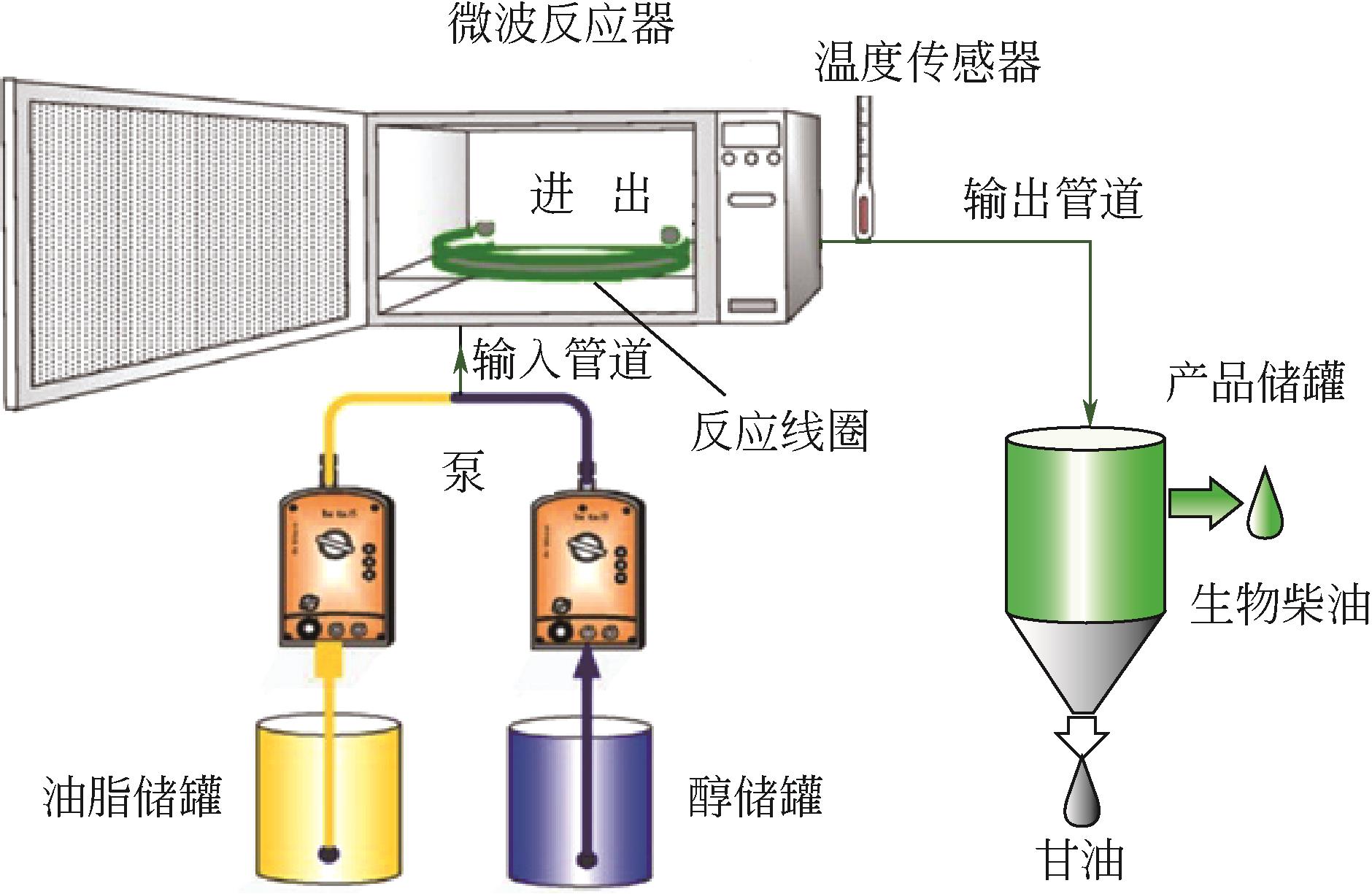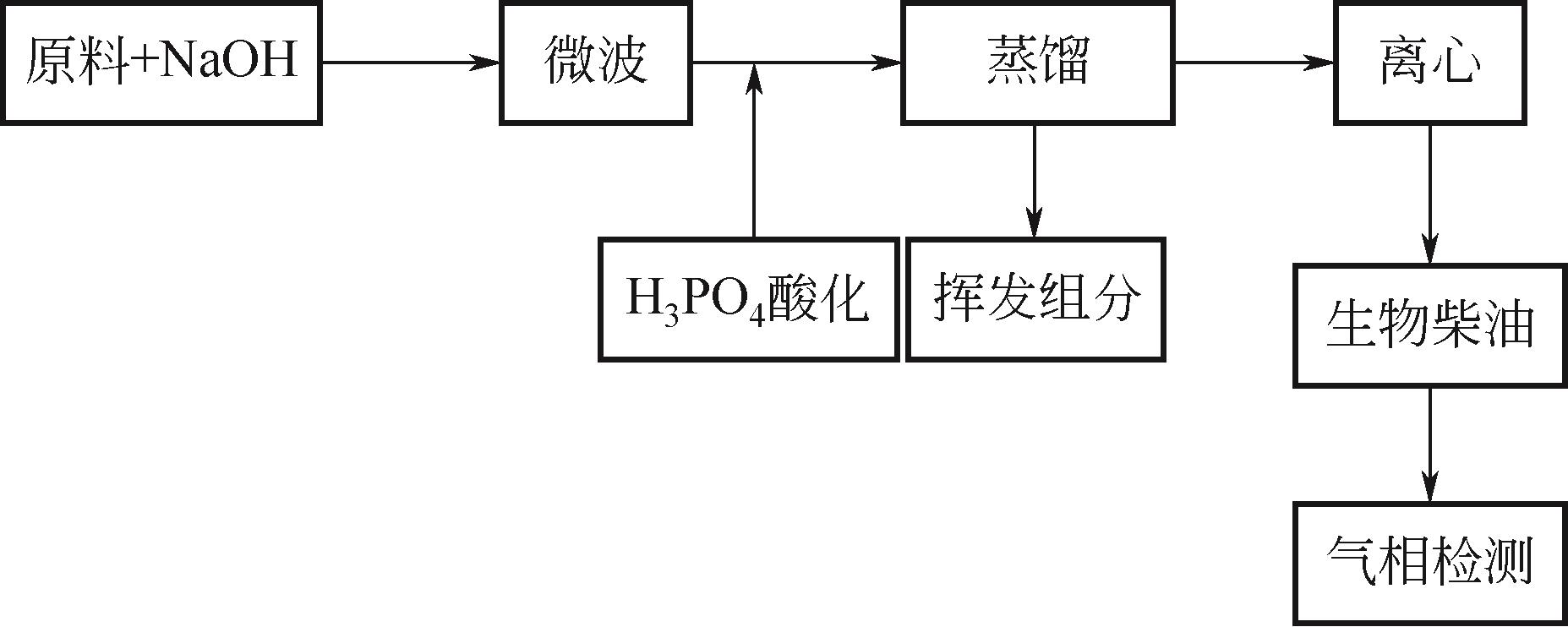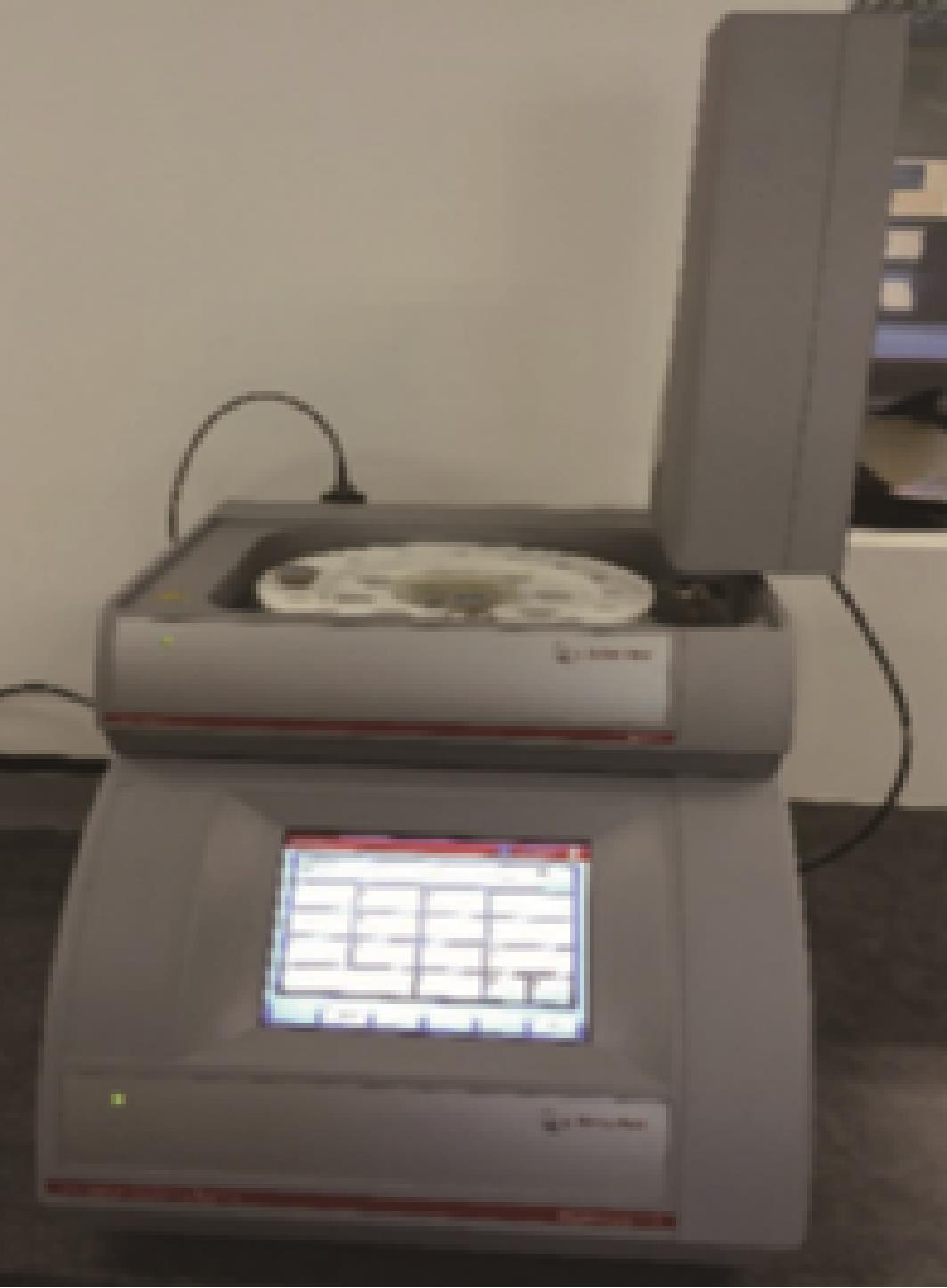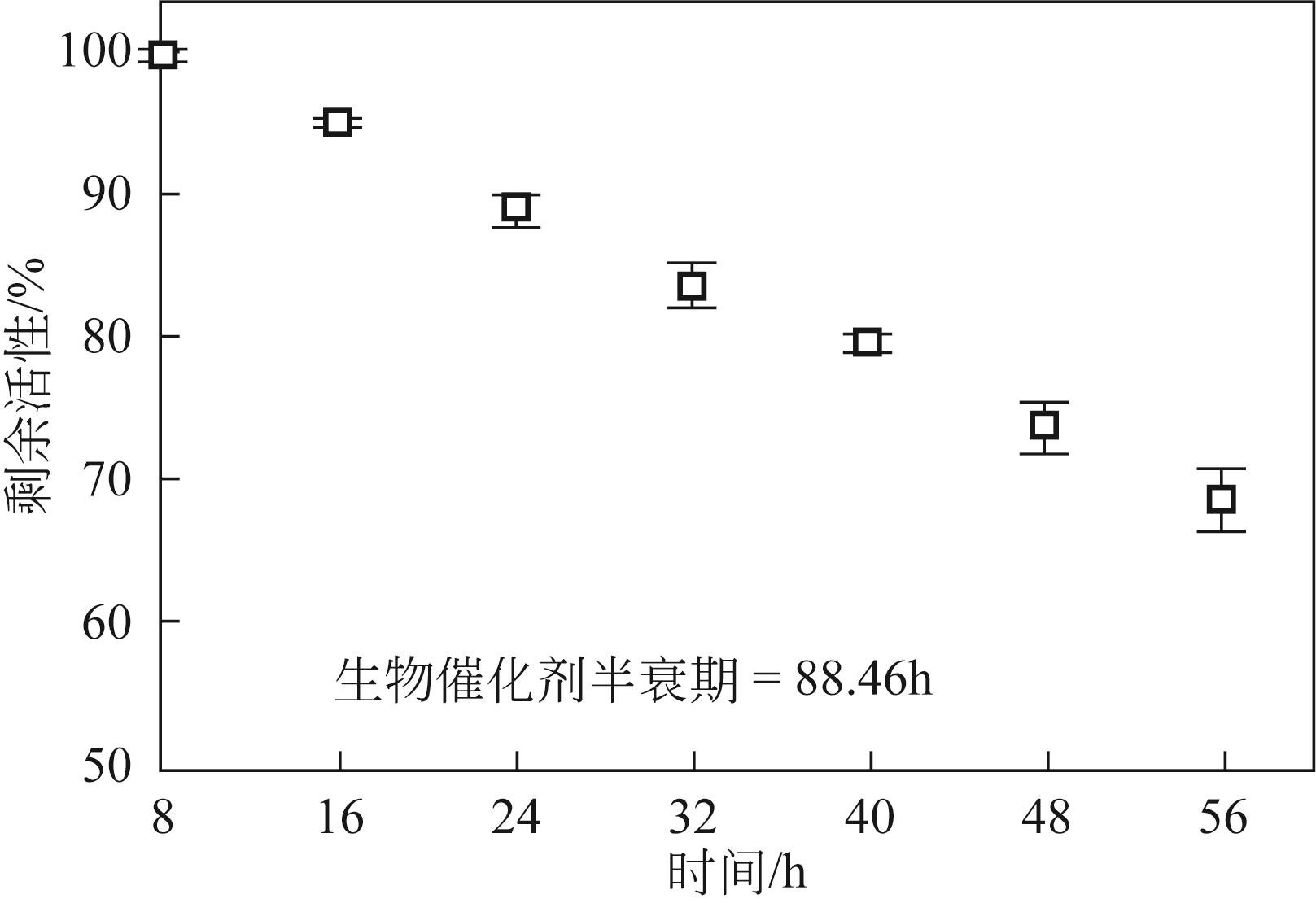化工进展 ›› 2022, Vol. 41 ›› Issue (10): 5145-5154.DOI: 10.16085/j.issn.1000-6613.2021-2657
微波强化酯交换反应制备生物柴油研究进展
朱长辉1( ), 朱文超1, 罗嘉2, 田保河1, 孙佳琳1, 邹志云1(
), 朱文超1, 罗嘉2, 田保河1, 孙佳琳1, 邹志云1( )
)
- 1.国民核生化灾害防护国家重点实验室,北京 102205
2.中国科学院西双版纳热带植物园,中国科学院热带植物资源可持续利用重点实验室,云南 昆明 650223
-
收稿日期:2021-12-30修回日期:2022-04-23出版日期:2022-10-20发布日期:2022-10-21 -
通讯作者:邹志云 -
作者简介:朱长辉(1989—),男,博士后,研究方向为工业催化。E-mail:zhuchanghui567@163.com。 -
基金资助:装备综合研究项目(JK20202A060496)
Recent advances in microwave-intensified transesterification for biodiesel preparation
ZHU Changhui1( ), ZHU Wenchao1, LUO Jia2, TIAN Baohe1, SUN Jialin1, ZOU Zhiyun1(
), ZHU Wenchao1, LUO Jia2, TIAN Baohe1, SUN Jialin1, ZOU Zhiyun1( )
)
- 1.State Key Laboratory of NBC Protection for Civilian, Beijing 102205, China
2.CAS Key Laboratory of Tropical Plant Resources and Sustainable Use, Xishuangbanna Tropical Botanical Garden, Chinese Academy of Sciences, Kunming 650223, Yunnan, China
-
Received:2021-12-30Revised:2022-04-23Online:2022-10-20Published:2022-10-21 -
Contact:ZOU Zhiyun
摘要:
在碳达峰、碳中和的目标背景下,生物柴油被认为是替代化石燃料最有前途的新型能源之一。作为新型的加热方式,微波强化技术克服了传统加热方式下受热不均等缺点,在与不同催化体系偶联的过程中显著促进了酯交换反应的效率,较大幅度地提高了生物柴油的产率。本文归纳了微波技术强化酯交换反应制备生物柴油的优势,介绍了微波强化技术偶联均相催化、非均相催化、离子液体催化以及酶催化技术在生物柴油制备领域的研究进展,阐述了微波强化技术偶联各催化体系的利弊。从催化效率和环保等方面考虑,微波强化偶联非均相催化和酶催化具有更优的研究前景。最后,就该领域的研究方向提出几点展望与建议。
中图分类号:
引用本文
朱长辉, 朱文超, 罗嘉, 田保河, 孙佳琳, 邹志云. 微波强化酯交换反应制备生物柴油研究进展[J]. 化工进展, 2022, 41(10): 5145-5154.
ZHU Changhui, ZHU Wenchao, LUO Jia, TIAN Baohe, SUN Jialin, ZOU Zhiyun. Recent advances in microwave-intensified transesterification for biodiesel preparation[J]. Chemical Industry and Engineering Progress, 2022, 41(10): 5145-5154.
| 序号 | 催化剂 | 底物 | 微波功率/W | 温度/℃ | 时间/min | 醇/底物剂量比 | 生物柴油产率/% | 参考文献 |
|---|---|---|---|---|---|---|---|---|
| 1 | H2SO4 | 小球藻油脂 | 450 | — | 70 | — | 31.6 | [ |
| 2 | Cs2.5H0.5PW12 | 文冠果油 | — | 60 | 10 | 12∶1 | 96.2 | [ |
| 3 | Cs2.5H0.5PW12 | 蓖麻油 | 300 | 70 | 240 | 30∶1 | 90 | [ |
表1 微波强化均相酸催化制备生物柴油
| 序号 | 催化剂 | 底物 | 微波功率/W | 温度/℃ | 时间/min | 醇/底物剂量比 | 生物柴油产率/% | 参考文献 |
|---|---|---|---|---|---|---|---|---|
| 1 | H2SO4 | 小球藻油脂 | 450 | — | 70 | — | 31.6 | [ |
| 2 | Cs2.5H0.5PW12 | 文冠果油 | — | 60 | 10 | 12∶1 | 96.2 | [ |
| 3 | Cs2.5H0.5PW12 | 蓖麻油 | 300 | 70 | 240 | 30∶1 | 90 | [ |
| 序号 | 催化剂 | 底物 | 微波功率/W | 温度/℃ | 时间/min | 醇/底物剂量比 | 生物柴油产率/% | 参考文献 |
|---|---|---|---|---|---|---|---|---|
| 1 | NaOH | 木瓜籽油 | 700 | 62.2 | 3.3 | 9.5∶1 | 99 | [ |
| 2 | NaOH | WCO | 1100 | — | 0.17 | 9∶1 | 100 | [ |
| 3 | NaOH | 菜籽油 | 300 | 60 | 1 | — | 97 | [ |
| 4 | NaOH | WCO | 750 | 60 | 10 | 6∶1 | — | [ |
| 5 | KOH | 粗木棉油 | 850 | — | 6.47 | 3∶5 | 95.4 | [ |
| 6 | KOH | 大豆油 | 70 | 65 | 15 | 12∶1 | 95.4 | [ |
| 7 | NaOH、KOH | 水黄皮籽油 | 1200 | 60 | 5 | 6∶1 | 96 | [ |
| 8 | CH3ONa | 棕榈油 | 750 | 60~65 | 3 | 6∶1 | 99.5 | [ |
| 9 | CH3ONa、NaOH | WCO | 750 | — | 3 | 6∶1 | 97.9 | [ |
表2 微波强化均相碱催化制备生物柴油
| 序号 | 催化剂 | 底物 | 微波功率/W | 温度/℃ | 时间/min | 醇/底物剂量比 | 生物柴油产率/% | 参考文献 |
|---|---|---|---|---|---|---|---|---|
| 1 | NaOH | 木瓜籽油 | 700 | 62.2 | 3.3 | 9.5∶1 | 99 | [ |
| 2 | NaOH | WCO | 1100 | — | 0.17 | 9∶1 | 100 | [ |
| 3 | NaOH | 菜籽油 | 300 | 60 | 1 | — | 97 | [ |
| 4 | NaOH | WCO | 750 | 60 | 10 | 6∶1 | — | [ |
| 5 | KOH | 粗木棉油 | 850 | — | 6.47 | 3∶5 | 95.4 | [ |
| 6 | KOH | 大豆油 | 70 | 65 | 15 | 12∶1 | 95.4 | [ |
| 7 | NaOH、KOH | 水黄皮籽油 | 1200 | 60 | 5 | 6∶1 | 96 | [ |
| 8 | CH3ONa | 棕榈油 | 750 | 60~65 | 3 | 6∶1 | 99.5 | [ |
| 9 | CH3ONa、NaOH | WCO | 750 | — | 3 | 6∶1 | 97.9 | [ |
| 序号 | 催化剂 | 底物 | 微波功率/W | 温度/℃ | 时间/min | 醇/底物比 | 生物柴油产率/% | 参考文献 |
|---|---|---|---|---|---|---|---|---|
| 1 | nM-CP-SO3H | 鸡血藤油 | — | 65 | 45 | 11∶1 | 98.7 | [ |
| 2 | WO3/ZrO2 | 栅藻 | 651 | 120 | 20 | 45∶1 | 51.9 | [ |
| 3 | ZrO2/BLA | 大豆油 | — | — | 30 | 15∶1 | 92.8 | [ |
| 4 | SO42-/Fe2O3 | 蓖麻油 | 300 | 65 | 180 | 30∶1 | 65.3 | [ |
| 5 | 蒙脱石KSF | 菜籽油 | 1000 | 170 | 60 | 9∶1 | 51 | [ |
表3 微波强化非均相酸催化制备生物柴油
| 序号 | 催化剂 | 底物 | 微波功率/W | 温度/℃ | 时间/min | 醇/底物比 | 生物柴油产率/% | 参考文献 |
|---|---|---|---|---|---|---|---|---|
| 1 | nM-CP-SO3H | 鸡血藤油 | — | 65 | 45 | 11∶1 | 98.7 | [ |
| 2 | WO3/ZrO2 | 栅藻 | 651 | 120 | 20 | 45∶1 | 51.9 | [ |
| 3 | ZrO2/BLA | 大豆油 | — | — | 30 | 15∶1 | 92.8 | [ |
| 4 | SO42-/Fe2O3 | 蓖麻油 | 300 | 65 | 180 | 30∶1 | 65.3 | [ |
| 5 | 蒙脱石KSF | 菜籽油 | 1000 | 170 | 60 | 9∶1 | 51 | [ |
| 序号 | 催化剂 | 底物 | 微波功率/W | 温度/℃ | 时间/min | 醇/底物剂量比 | 产率/% | 参考文献 |
|---|---|---|---|---|---|---|---|---|
| 1 | CaO | 大豆油 | 300 | 65 | 60 | 7∶1 | 96.6 | [ |
| 2 | CaO/ZSM-5 | 废猪油 | 640 | 65 | 60 | 30∶1 | 90.9 | [ |
| 3 | MgO/ZSM-5 | 螺旋藻酯 | 150 | 70 | 40 | 8∶1 | 95.8 | [ |
| 4 | SrO@SiO2 | WCO | 770 | 60 | 0.17 | — | 99.4 | [ |
| 5 | SrO@SiO2 | 微拟球藻酯 | 900 | 60 | 2 | — | 99.9 | [ |
| 6 | KOH/Ca12Al14O33 | 菜籽油 | 450 | 260 | 60 | 12∶1 | 76.9 | [ |
| 7 | 低铝β分子筛 | 甘油三酯 | 800 | 100 | 480 | 15∶1 | 80 | [ |
表4 微波强化非均相碱催化制备生物柴油
| 序号 | 催化剂 | 底物 | 微波功率/W | 温度/℃ | 时间/min | 醇/底物剂量比 | 产率/% | 参考文献 |
|---|---|---|---|---|---|---|---|---|
| 1 | CaO | 大豆油 | 300 | 65 | 60 | 7∶1 | 96.6 | [ |
| 2 | CaO/ZSM-5 | 废猪油 | 640 | 65 | 60 | 30∶1 | 90.9 | [ |
| 3 | MgO/ZSM-5 | 螺旋藻酯 | 150 | 70 | 40 | 8∶1 | 95.8 | [ |
| 4 | SrO@SiO2 | WCO | 770 | 60 | 0.17 | — | 99.4 | [ |
| 5 | SrO@SiO2 | 微拟球藻酯 | 900 | 60 | 2 | — | 99.9 | [ |
| 6 | KOH/Ca12Al14O33 | 菜籽油 | 450 | 260 | 60 | 12∶1 | 76.9 | [ |
| 7 | 低铝β分子筛 | 甘油三酯 | 800 | 100 | 480 | 15∶1 | 80 | [ |
| 序号 | 离子液体 | 底物 | 微波功率/W | 温度/℃ | 时间/min | 醇/底物剂量比 | 产率/% | 参考文献 |
|---|---|---|---|---|---|---|---|---|
| 1 | [BMim]HSO4 | 毛竹油 | — | 60 | 6 | 9∶1 | 92.8 | [ |
| 2 | [HSO3-pPy]HSO4 | 大豆油 | 400 | 75 | 45 | 12∶1 | 95.1 | [ |
| 3 | [SO3H-BMim]HSO4 | 棕榈油 | 168 | 80 | 385.8 | 11∶1 | 98.9 | [ |
| 4 | [SO3H-BMim]HSO4 | 小球藻油脂 | 400 | 60 | 40 | 6∶1 | 93.3 | [ |
| 5 | [MorMeA]Br | WCO | — | 70 | 6 | 9∶1 | 89.1 | [ |
| 6 | DPATs | 玉米油 | — | 150 | 20 | 5∶2 | 100 | [ |
表5 微波强化离子液体催化制备生物柴油
| 序号 | 离子液体 | 底物 | 微波功率/W | 温度/℃ | 时间/min | 醇/底物剂量比 | 产率/% | 参考文献 |
|---|---|---|---|---|---|---|---|---|
| 1 | [BMim]HSO4 | 毛竹油 | — | 60 | 6 | 9∶1 | 92.8 | [ |
| 2 | [HSO3-pPy]HSO4 | 大豆油 | 400 | 75 | 45 | 12∶1 | 95.1 | [ |
| 3 | [SO3H-BMim]HSO4 | 棕榈油 | 168 | 80 | 385.8 | 11∶1 | 98.9 | [ |
| 4 | [SO3H-BMim]HSO4 | 小球藻油脂 | 400 | 60 | 40 | 6∶1 | 93.3 | [ |
| 5 | [MorMeA]Br | WCO | — | 70 | 6 | 9∶1 | 89.1 | [ |
| 6 | DPATs | 玉米油 | — | 150 | 20 | 5∶2 | 100 | [ |
| 序号 | 酶 | 底物 | 微波功率/W | 温度/℃ | 时间/min | 醇/底物剂量比 | 产率/% | 参考文献 |
|---|---|---|---|---|---|---|---|---|
| 1 | Novozym 435和脂肪酶Mucormiehei | Macauba油 | — | 30~40 | — | 9∶1 | — | [ |
| 2 | Novozym 435 | Mucorcircinelloides URM4182油脂 | 200 | 60 | 600 | 12∶1 | 98.5 | [ |
| 3 | Burkholderiacepacia脂肪酶 | 牛油 | 8~15 | 50 | 480 | 6∶1 | 75 | [ |
| 4 | Pseudomonasfluorescens脂肪酶 | 棕榈油 | 8~15 | 43 | 480 | 8∶1 | 97.6 | [ |
| 5 | Novozym 435 | 文冠果籽油 | 400 | 50 | 120 | 6∶1 | 90.3 | [ |
| 6① | Novozym 435 | WCO | 10~55 | 40 | 240 | 4.5∶1 | 94 | [ |
| 7② | Novozym 435 | 大豆油 | 480 | 60 | 360 | 6∶1 | 92 | [ |
表6 微波强化酶催化制备生物柴油
| 序号 | 酶 | 底物 | 微波功率/W | 温度/℃ | 时间/min | 醇/底物剂量比 | 产率/% | 参考文献 |
|---|---|---|---|---|---|---|---|---|
| 1 | Novozym 435和脂肪酶Mucormiehei | Macauba油 | — | 30~40 | — | 9∶1 | — | [ |
| 2 | Novozym 435 | Mucorcircinelloides URM4182油脂 | 200 | 60 | 600 | 12∶1 | 98.5 | [ |
| 3 | Burkholderiacepacia脂肪酶 | 牛油 | 8~15 | 50 | 480 | 6∶1 | 75 | [ |
| 4 | Pseudomonasfluorescens脂肪酶 | 棕榈油 | 8~15 | 43 | 480 | 8∶1 | 97.6 | [ |
| 5 | Novozym 435 | 文冠果籽油 | 400 | 50 | 120 | 6∶1 | 90.3 | [ |
| 6① | Novozym 435 | WCO | 10~55 | 40 | 240 | 4.5∶1 | 94 | [ |
| 7② | Novozym 435 | 大豆油 | 480 | 60 | 360 | 6∶1 | 92 | [ |
| 1 | 王笃政, 孙永杰, 孙彬峰, 等. 微波强化化工过程技术进展[J]. 精细与专用化学品, 2012, 20(12): 38-41. |
| WANG D Z, SUN Y J, SUN B F, et al. Review on the intensification of chemical engineering processes by microwave[J]. Fine and Specialty Chemicals, 2012, 20(12): 38-41. | |
| 2 | 张伟, 韩立峰. 国内外生物柴油研究现状及发展趋势[J]. 化工管理, 2021(12): 72-73. |
| ZHANG W, HAN L F. Research status and development trend of biodiesel at home and abroad[J]. Chemical Enterprise Management, 2021(12): 72-73. | |
| 3 | 张梦妮, 程敢, 李玉龙. 生物柴油的制备及其在浮选中的应用进展[J]. 洁净煤技术, 2021, 27(1): 34-40. |
| ZHANG M N, CHENG G, LI Y L. Research progress on the preparation of biodiesel and its application in flotation[J]. Clean Coal Technology, 2021, 27(1): 34-40. | |
| 4 | 李顶杰, 吕勃. 推动废弃油脂制生物燃料产业发展[N]. 中国石油报, 2021-09-28(6). |
| 5 | APPLETON T J, COLDER R I, KINGMAN S W, et al. Microwave technology for energy-efficient processing of waste[J]. Applied Energy, 2005, 81(1): 85-113. |
| 6 | ZHANG F H, ZHOU T Y, LIU Y J, et al. Microwave synthesis and actuation of shape memory polycaprolactone foams with high speed[J]. Scientific Reports, 2015, 5: 11152. |
| 7 | 潘凯, 吴炼, 钟浪声, 等. 酯交换制备生物柴油过程强化技术研究进展[J]. 大众科技, 2017, 19(5): 39-43. |
| PAN K, WU L, ZHONG L S, et al. Progress in biodiesel production via process intensification[J]. Popular Science & Technology, 2017, 19(5): 39-43. | |
| 8 | MOTASEMI F, ANI F N. A review on microwave-assisted production of biodiesel[J]. Renewable and Sustainable Energy Reviews, 2012, 16(7): 4719-4733. |
| 9 | 蒋波, 张晓东, 孙立, 等. 微波促进生物柴油制备的研究进展[J]. 化工进展, 2010, 29(11): 2057-2065. |
| JIANG B, ZHANG X D, SUN L, et al. Advances in microwave promoted biodiesel synthesis[J]. Chemical Industry and Engineering Progress, 2010, 29(11): 2057-2065. | |
| 10 | KALSUM U, MAHMUDDIN, MAHFUD M, et al. Biodiesel production from Chlorella vulgaris via homogenous acid catalyzed in situ transesterification with microwave irradiation[J]. IOP Conference Series: Earth and Environmental Science, 2018, 175: 012018. |
| 11 | ZHANG S, ZU Y G, FU Y J, et al. Rapid microwave-assisted transesterification of yellow horn oil to biodiesel using a heteropolyacid solid catalyst[J]. Bioresource Technology, 2010, 101(3): 931-936. |
| 12 | YUAN H, SHU Q. Synthesis of biodiesel from castor oil catalyzed by cesium phosphotungstate with the assistance of microwave[J]. Applied Mechanics and Materials, 2013, 291/292/293/294: 300-306. |
| 13 | NAYAK M G, VYAS A P. Optimization of microwave-assisted biodiesel production from Papaya oil using response surface methodology[J]. Renewable Energy, 2019, 138: 18-28. |
| 14 | LERTSATHAPORNSUK V, PAIRINTRA R, KRISNANGKURA K. Direct conversion of used vegetable oil to biodiesel and its use as an alternative fuel for compression ignition engine[C]// Proc First Int Conf Sustainable Energy and Green Architecture. 2003: SE091-SE096. |
| 15 | HERNANDO J, LETON P, MATIA M P, et al. Biodiesel and FAME synthesis assisted by microwaves: homogeneous batch and flow processes[J]. Fuel, 2007, 86(10/11): 1641-1644. |
| 16 | SAIFUDDIN N M, CHUA K H. Production of ethyl ester (biodiesel) from used frying oil: optimization of transesterification process using microwave irradiation[J]. Malaysian Journal of Chemistry, 2004, 6(1): 77-82. |
| 17 | SILITONGA A S, SHAMSUDDIN A H, MAHLIA T M I, et al. Biodiesel synthesis from Ceiba pentandra oil by microwave irradiation-assisted transesterification: ELM modeling and optimization[J]. Renewable Energy, 2020, 146: 1278-1291. |
| 18 | ENCINAR J M, GONZÁLEZ J F, MARTÍNEZ G, et al. Soybean oil transesterification by the use of a microwave flow system[J]. Fuel, 2012, 95: 386-393. |
| 19 | KUMAR R, KUMAR G R, CHANDRASHEKAR N. Microwave assisted alkali-catalyzed transesterification of Pongamia pinnata seed oil for biodiesel production[J]. Bioresource Technology, 2011, 102(11): 6617-6620. |
| 20 | LIN Y C, HSU K H, LIN J F. Rapid palm-biodiesel production assisted by a microwave system and sodium methoxide catalyst[J]. Fuel, 2014, 115: 306-311. |
| 21 | CHEN K S, LIN Y C, HSU K H, et al. Improving biodiesel yields from waste cooking oil by using sodium methoxide and a microwave heating system[J]. Energy, 2012, 38(1): 151-156. |
| 22 | CHELLAPPAN S, APARNA K, CHINGAKHAM C, et al. Microwave assisted biodiesel production using a novel Brønsted acid catalyst based on nanomagnetic biocomposite[J]. Fuel, 2019, 246: 268-276. |
| 23 | GULDHE A, SINGH B, RAWAT I, et al. Synthesis of biodiesel from Scenedesmus sp. by microwave and ultrasound assisted in situ transesterification using tungstated zirconia as a solid acid catalyst[J]. Chemical Engineering Research and Design, 2014, 92(8): 1503-1511. |
| 24 | FATIMAH I, RUBIYANTO D, TAUSHIYAH A, et al. Use of ZrO2 supported on bamboo leaf ash as a heterogeneous catalyst in microwave-assisted biodiesel conversion[J]. Sustainable Chemistry and Pharmacy, 2019, 12: 100129. |
| 25 | YUAN H, MA X Q, HE J, et al. Surface characterization of sulfated iron oxide and its synthesis of biodiesel under microwave radiation[J]. International Journal of Chemical Reactor Engineering, 2018, 16(2): 20160161. |
| 26 | MAZZOCCHIA C, MODICA G, KADDOURI A, et al. Fatty acid methyl esters synthesis from triglycerides over heterogeneous catalysts in the presence of microwaves[J]. Comptes Rendus Chimie, 2004, 7(6/7): 601-605. |
| 27 | HSIAO M C, LIN C C, CHANG Y H. Microwave irradiation-assisted transesterification of soybean oil to biodiesel catalyzed by nanopowder calcium oxide[J]. Fuel, 2011, 90(5): 1963-1967. |
| 28 | LAWAN I, GARBA Z N, ZHOU W M, et al. Synergies between the microwave reactor and CaO/zeolite catalyst in waste lard biodiesel production[J]. Renewable Energy, 2020, 145: 2550-2560. |
| 29 | QU S K, CHEN C, GUO M L, et al. Microwave-assisted in situ transesterification of Spirulina platensis to biodiesel using PEG/MgO/ZSM-5 magnetic catalyst[J]. Journal of Cleaner Production, 2021, 311: 127490. |
| 30 | TANGY A, PULIDINDI I N, GEDANKEN A. SiO2 beads decorated with SrO nanoparticles for biodiesel production from waste cooking oil using microwave irradiation[J]. Energy & Fuels, 2016, 30(4): 3151-3160. |
| 31 | NAOR E O, KOBERG M, GEDANKEN A. Nonaqueous synthesis of SrO nanopowder and SrO/SiO2 composite and their application for biodiesel production via microwave irradiation[J]. Renewable Energy, 2017, 101: 493-499. |
| 32 | YE B, QIU F X, SUN C J, et al. Transesterification of soybean oil to biodiesel in a microwave-assisted heterogeneous catalytic system[J]. Chemical Engineering & Technology, 2014, 37(2): 283-292. |
| 33 | WANG Y Y, LEE D J, CHEN B H. Low-Al zeolite beta as a heterogeneous catalyst in biodiesel production from microwave-assisted transesterification of triglycerides[J]. Energy Procedia, 2014, 61: 918-921. |
| 34 | NAYEBZADEH H, SAGHATOLESLAMI N, HAGHIGHI M, et al. Influence of fuel type on microwave-enhanced fabrication of KOH/Ca12Al14O33 nanocatalyst for biodiesel production via microwave heating[J]. Journal of the Taiwan Institute of Chemical Engineers, 2017, 75: 148-155. |
| 35 | IKENAGA K, HAMADA A, INOUE T, et al. Biodiesel production using metal oxide catalysts under microwave heating[J]. International Journal of Biomass and Renewables, 2017, 6(2): 23-26. |
| 36 | HANDAYANI P A, ABDULLAH A, HADIYANTO H. Biodiesel production from Nyamplung (Calophyllum inophyllum) oil using ionic liquid as a catalyst and microwave heating system[J]. Bulletin of Chemical Reaction Engineering & Catalysis, 2017, 12(2): 293. |
| 37 | 敖红伟, 王淑波. 微波协同功能化酸性离子液体催化制备生物柴油工艺研究[J]. 粮食与油脂, 2017, 30(10): 50-53. |
| AO H W, WANG S B. Study on the preparation of biodiesel by microwave assisted functionalized acidic ionic liquid[J]. Cereals & Oils, 2017, 30(10): 50-53. | |
| 38 | DING H, YE W, WANG Y Q, et al. Process intensification of transesterification for biodiesel production from palm oil: microwave irradiation on transesterification reaction catalyzed by acidic imidazolium ionic liquids[J]. Energy, 2018, 144: 957-967. |
| 39 | 苗长林, 吕鹏梅, 王忠铭, 等. 微波辅助组合离子液体直接制备微藻生物柴油[J]. 太阳能学报, 2021, 42(2): 233-238. |
| MIAO C L, LYU P M, WANG Z M, et al. Preparation of microalgae biodiesel by direct transesterification under microwave-assisted ionic liquid composite conditions[J]. Acta Energiae Solaris Sinica, 2021, 42(2): 233-238. | |
| 40 | LIN Y C, YANG P M, CHEN S C, et al. Improving biodiesel yields from waste cooking oil using ionic liquids as catalysts with a microwave heating system[J]. Fuel Processing Technology, 2013, 115: 57-62. |
| 41 | MAJEWSKI M W, POLLACK S A, CURTIS-PALMER V A. Diphenylammonium salt catalysts for microwave assisted triglyceride transesterification of corn and soybean oil for biodiesel production[J]. Tetrahedron Letters, 2009, 50(37): 5175-5177. |
| 42 | NOGUEIRA B M, CARRETONI C, CRUZ R, et al. Microwave activation of enzymatic catalysts for biodiesel production[J]. Journal of Molecular Catalysis B: Enzymatic, 2010, 67(1/2): 117-121. |
| 43 | CARVALHO A K F, BENTO H B S, IZÁRIO FILHO H J, et al. Approaches to convert Mucor circinelloides lipid into biodiesel by enzymatic synthesis assisted by microwave irradiations[J]. Renewable Energy, 2018, 125: 747-754. |
| 44 | RÓS P C M DA, DE CASTRO H F, CARVALHO A K F, et al. Microwave-assisted enzymatic synthesis of beef tallow biodiesel[J]. Journal of Industrial Microbiology and Biotechnology, 2012, 39(4): 529-536. |
| 45 | RÓS P C M DA, FREITAS L, PEREZ V H, et al. Enzymatic synthesis of biodiesel from palm oil assisted by microwave irradiation[J]. Bioprocess and Biosystems Engineering, 2013, 36(4): 443-451. |
| 46 | ZHANG Y H, XIA X X, DUAN M H, et al. Green deep eutectic solvent assisted enzymatic preparation of biodiesel from yellow horn seed oil with microwave irradiation[J]. Journal of Molecular Catalysis B: Enzymatic, 2016, 123: 35-40. |
| 47 | PANADARE D C, RATHOD V K. Microwave assisted enzymatic synthesis of biodiesel with waste cooking oil and dimethyl carbonate[J]. Journal of Molecular Catalysis B: Enzymatic, 2016, 133: S518-S524. |
| 48 | YU D H, WANG C M, YIN Y N, et al. A synergistic effect of microwave irradiation and ionic liquids on enzyme-catalyzed biodiesel production[J]. Green Chemistry, 2011, 13(7): 1869. |
| 49 | PATIL P D, REDDY H, MUPPANENI T, et al. In situ ethyl ester production from wet algal biomass under microwave-mediated supercritical ethanol conditions[J]. Bioresource Technology, 2013, 139: 308-315. |
| 50 | GOLE V L, GOGATE P R. Intensification of synthesis of biodiesel from non-edible oil using sequential combination of microwave and ultrasound[J]. Fuel Processing Technology, 2013, 106: 62-69. |
| 51 | KHEDRI B, MOSTAFAEI M, SAFIEDDIN ARDEBILI S M. A review on microwave-assisted biodiesel production[J]. Energy Sources, Part A: Recovery, Utilization, and Environmental Effects, 2019, 41(19): 2377-2395. |
| 52 | 陈榆中. 微波反应器及其制备生物柴油的应用研究[D]. 无锡: 江南大学, 2014. |
| CHEN Y Z. Study on microwave reactor and its application in the preparation of biodiesel[D]. Wuxi: Jiangnan University, 2014. | |
| 53 | MOHAMAD AZIZ N A, YUNUS R, KANIA D, et al. Prospects and challenges of microwave-combined technology for biodiesel and biolubricant production through a transesterification: a review[J]. Molecules, 2021, 26(4): 788. |
| [1] | 金鑫, 李玉姗, 解青青, 王梦雨, 夏星帆, 杨朝合. 多孔材料催化丙酮缩甘油合成研究进展[J]. 化工进展, 2023, 42(2): 731-743. |
| [2] | 秦振芳, 廖日红, 马伟芳. 吸收-微藻法固定燃气电厂低浓度CO2同步产油技术研究进展[J]. 化工进展, 2023, 42(1): 94-106. |
| [3] | 赵建兵, 杨丹, 舒原草, 朱俊波, 普仕萍, 宋晓丹, 刘守庆, 柴希娟, 李雪梅. Na2CO3/CF固体碱对菜籽油酯交换反应的催化性能[J]. 化工进展, 2022, 41(7): 3608-3614. |
| [4] | 邹鹏程, 金光远, 李臻峰, 宋春芳, 韩太柏, 祝玉莲. 一种具有模式搅拌的微波反应釜内多物理场特性分析[J]. 化工进展, 2022, 41(5): 2301-2310. |
| [5] | 马鑫, 王霜, 李法社, 张逸水, 蒋上. 生物柴油雾化特性仿真模拟及实验研究[J]. 化工进展, 2022, 41(2): 655-665. |
| [6] | 纪淑兰, 李迅, 王飞. 丝瓜络固定化米根霉催化光皮树油制备生物柴油[J]. 化工进展, 2022, 41(10): 5381-5389. |
| [7] | 岳倩倩, 高李璟, 肖国民, 魏瑞平, 雷严. 生物柴油连续化生产设备及工艺进展[J]. 化工进展, 2021, 40(S2): 81-88. |
| [8] | 邹帅, 李玉芹, 马怡然, 齐振华, 贾权威. 二乙醇胺强化胶球藻Coccomyxa subellipsoidea C-169固定CO2和积累油脂[J]. 化工进展, 2021, 40(9): 5222-5230. |
| [9] | 包文君, 李子富, 王雪梅, 高瑞岭, 程世昆, 门玉. 产油酵母利用廉价原料合成油脂的研究进展[J]. 化工进展, 2021, 40(5): 2484-2495. |
| [10] | 孟心宇, 徐杰, 万杰, 刘雁军, 王晓丽, 张君, 郑锋, 阚建飞, 吴功德. 碳酸甘油酯的合成研究及产业化进展[J]. 化工进展, 2020, 39(9): 3739-3749. |
| [11] | 邢海亮,董训赞,韩本勇,耿树香,宁德鲁,马婷,余旭亚. 二氧化碳联合核桃壳提取液促进单针藻Monoraphidium sp. QLZ-3的生长和油脂积累[J]. 化工进展, 2020, 39(4): 1575-1582. |
| [12] | 王霜,王友昊,李法社,王文超,隋猛. 基于紫外吸光度的生物柴油氧化降解程度分析[J]. 化工进展, 2020, 39(2): 506-512. |
| [13] | 滕雯, 陈勇, 隋猛, 李法社. TEPA与[MI][C6H2(OH)3COO]复配对小桐子生物柴油抗氧化性的影响[J]. 化工进展, 2020, 39(11): 4427-4434. |
| [14] | 黄泽健,罗祎青,袁希钢. 水处理集成微藻生物柴油生命周期系统环境影响评价[J]. 化工进展, 2020, 39(1): 34-41. |
| [15] | 袁川, 鲁厚芳, 刘长军, 蒋炜, 刘颖颖, 梁斌. 水和游离脂肪酸对DBU催化制备生物柴油的影响[J]. 化工进展, 2018, 37(09): 3386-3392. |
| 阅读次数 | ||||||
|
全文 |
|
|||||
|
摘要 |
|
|||||







